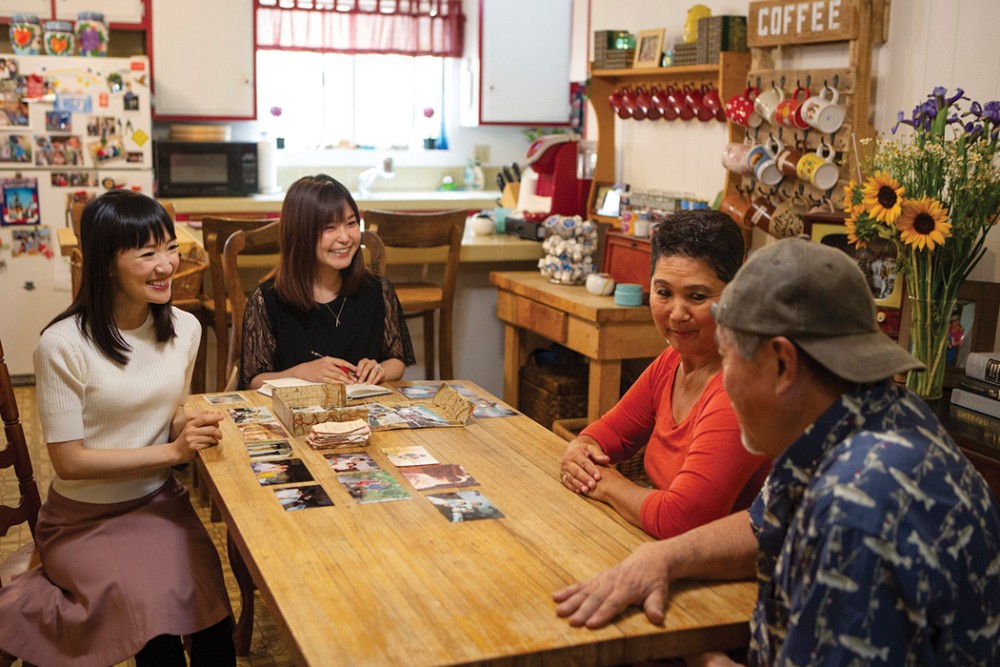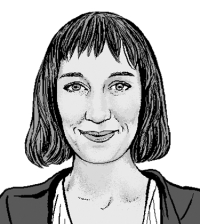Why Americans have a spiritual need for KonMari
Marie Kondo works to restore right relationships between humans and objects.

Since her book The Life-Changing Magic of Tidying Up was published in the United States in 2014, Marie Kondo has ignited controversy and delight with her rigorous system of decluttering and organizing. But Kondo doesn’t want merely to reorganize your closets. She wants to transform your soul. Watching her new Netflix show Tidying Up with Marie Kondo brings into full relief the missionary edge to her work. And it makes a strong case that most of us need saving.
About halfway through the series, a man on the cusp of fatherhood sits in his garage surrounded by piles of stuff. He is supposed to be discerning between items that spark joy and those that don’t. He reaches for a dented, metal mailbox, the kind that hangs next to a front door, explaining that it was originally on the first house he and his wife bought. He connects it to what it meant to him to buy the house, and to what the house meant to his parents, who are first-generation immigrants. It turns out he has a complicated attachment to an object he has never used and has no intention of using. He turns to Kondo and says, “What do you do with an object like this?”
Read our latest issue or browse back issues.
Kondo gently asks, “So you have decided that this is an object you want to bring into your future?” Immediately the man relaxes. “No,” he says. “When you put it that way, I definitely don’t need this in my future.” He thanks the mailbox for its place in his life (a key part of the KonMari method of tidying) and sets it aside. In a series of monologues, he proceeds to work through a host of feelings related to impending parenthood, his parents, and his immigrant past.
That is a lot of emotional labor connected with a mailbox. As becomes clear in the series’ eight episodes (carefully curated to represent middle-class families across a spectrum of racial, ethnic, and sexual identities), the real work of the KonMari method is transforming people’s relationship to things.
This dimension sets Kondo apart from most organizational experts and home improvement shows. In most shows of this genre, a deserving family lives in a semi-crappy house surrounded by semi-crappy stuff. A team of experts descends, with undisclosed sums of money, to make a new life possible thanks to better rug placement and fabulous corner cabinet organizers. If you know the Kondo method only through books or Instagram, you might think it is more of the same: an expert promising an optimized life through a probably expensive makeover. But translated into a TV series, the Kondo method looks more like radical therapy and spiritual discipline.
Kondo’s job is to restore the right relationship between humans and objects by offering a clear hermeneutic to discern which objects people should keep: only those that “spark joy.” This joy is a physical response to an object, an affinity one can feel in one’s body (even if that affinity raises complex or sad feelings). She insists that people can learn a form of spiritual discernment through practice. The more you sort, the more attuned you become to which objects affect you in the powerful way Kondo believes that they should.
The very idea that things are invested with spiritual power leads many to accuse her of peddling a soft form of animism. Her detractors often use thinly veiled racist and misogynistic terms to ridicule her “woo-woo nonsense” or “fairy magic.” Those critics set up her ideas as obviously ridiculous, suggesting that her Japanese beliefs won’t work in rational America.
This criticism ignores that fact that people in postindustrial capitalist societies (Japan as well as the United States, Australia, and Britain) really are confused about their stuff. The confusion stems from two contradictory directives. On the one hand, we are inheritors of a modern story that devalues objects in favor of abstract ideas and spiritual truths. This story stems partly from a Protestant instinct to purge the world of its idols and partly from an Enlightenment philosophical instinct to purge the world of superstitions. On the other hand, the economic imperative of consumer culture encourages us to acquire more and more things, which the culture promises will fulfill our deepest desires and transform our lives for the better.
Caught in these crosshairs, many of the people on Kondo’s show are ashamed and confused by the fact that their stuff means so much to them. Others feel ashamed that, though the stuff means little to them, it still dominates their lives.
Paradoxically, by teaching people to see that things have a kind of spiritual presence, Kondo helps to put things in their proper place, freeing up space for other kinds of transformations. A newly retired couple works through the emotional patterns in their marriage; a widow grieves her husband; and almost all of the participants reckon with the unexamined gender dynamics that keep their families afloat. The show is more about spiritual conversion than home improvement. No one gets nicer furniture or better interior design, but everyone confesses to new self-knowledge and greater peace.
A version of this article appears in the print edition under the title “What makes KonMari different.”






